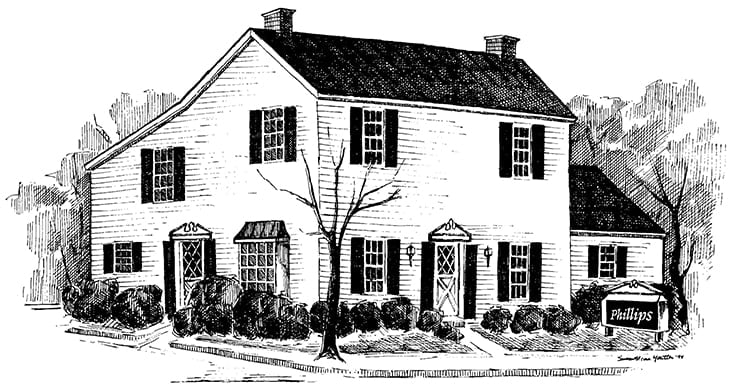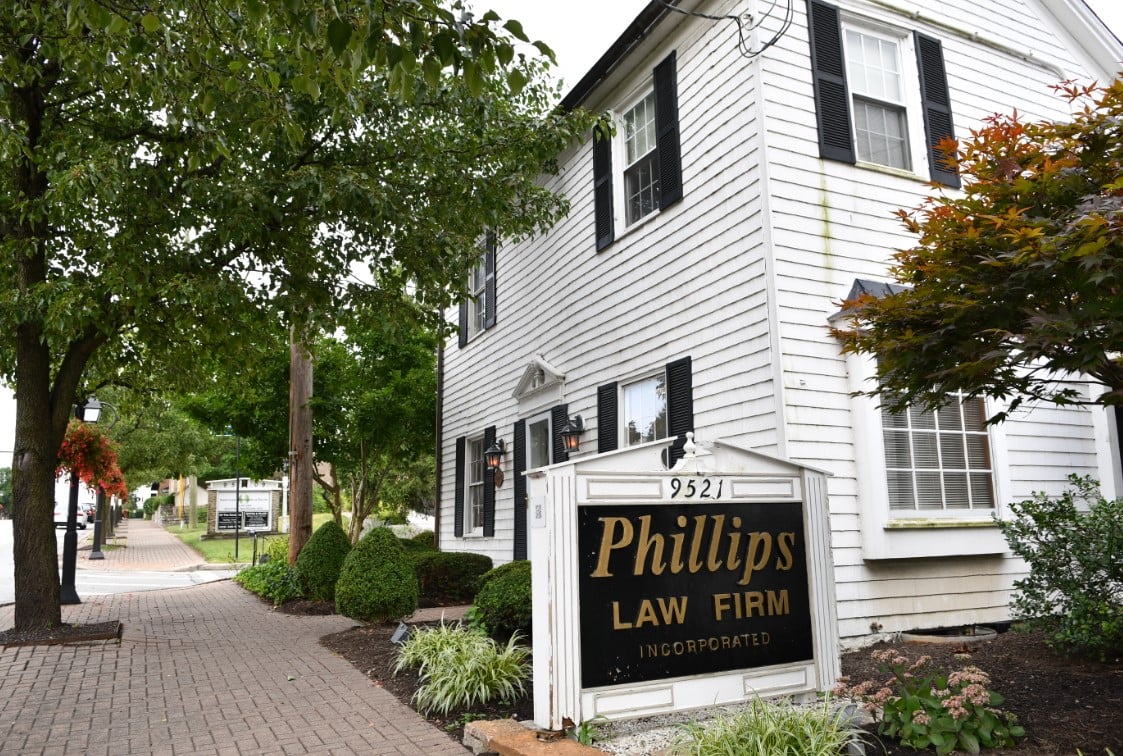History of the Bell House
The History of the Bell House is provided here as told to John H. Phillips by one of its former occupants, Physician Edward Slowik, in the summer of 1995. Dr. Slowik claimed to have researched this history of the building and had this to say when he visited the building to walk down memory lane about what was once his historic location.
In 1795, a road was built along the present-day path of Montgomery Road, connecting Cincinnati with Montgomery, Ohio and eventually beyond. Montgomery Road was known as the “State Road.” The house at 9521 Montgomery Road is believed to have been built sometime around 1825, although construction records do not exist, and its construction could be earlier than estimated. The architectural style is called “salt box,” and derives its name from the popular wooden box used to store salt in Colonial times; both the house and the wooden box share the same gable roof shape that has just one story in the back and two stories in the front.
When “State Road” was extended beyond Montgomery towards Columbus, Ohio, tollhouses were used to recover the funds used for construction. The house at 9521 Montgomery Road was originally constructed as one of the tollhouses. The occupant of the house was responsible for going out into Montgomery Road and stopping the horses and wagons to collect the toll between this tollhouse, and the tollhouse known as 20 mile station. With the demolition of 20 mile station on April 16, 2013, the Bell House is believed to be the last tollhouse to stand on Montgomery Road.
When it ceased being used as a toll house, it was a residence for several families, eventually being owned by the woman from whom it takes its landmark name, Eliza Jane Weller Bell who lived in the house in 1890. As downtown Montgomery commercialized, the house became the location of the community physician, and was a trauma center. Persons who were in an accident or suffering from a health related trauma were brought into the door on the south side of the building where the local physician had one job – stabilize the patient to survive the 4 hour horse and buggy ride to one of the Clifton hospitals.
In April 1960, the building continued to be used as a Physician’s office when it was purchased by Dr. Edward M. Slowik, who later became a founder of Otto C. Epp Memorial Hospital (now Jewish Hospital). Although not widely known, Dr. Slowik was the twin brother of Uncle Al Lewis, from the Uncle Al show that aired for decades in Cincinnati, Ohio. Under Dr. Slowik’s ownership, the building was renovated, and an addition was added to the north end of the building. Eventually, Dr. Slowik added Dr. Richard Sulek to his medical practice and the two practiced together until 1985 at this location.
In 1985, Paul Wesselkamper purchased the building and operated a successful real estate office known as “Signature Realty” out of the location until 1994. In 1994, Phillips Law Firm, Inc. moved in and renovated the building for use as a law firm. Phillips Law Firm, Inc. has been continuously operating at this location since 1994. In 2005, improvements were made to the building, including the removal of a rolled steel roof believed to date to around 1900. Under the rolled tin roof was the deteriorated cedar shake roof dating back to the original construction. A new historically accurate cedar shake roof was installed, and Phillips Law Firm, Inc. was the recipient of the 2005 Montgomery Historical Preservation Award for its efforts. A shadow box with renovation pictures and items found on the property is located in the lobby of the building, and includes some of the original roofing shingles from circa 1825, handmade glass insulators from when the building once had lightning rods, a horseshoe found in the rafters of the root cellar (because it was not a basement when constructed), and a buffalo gun cartridge.


